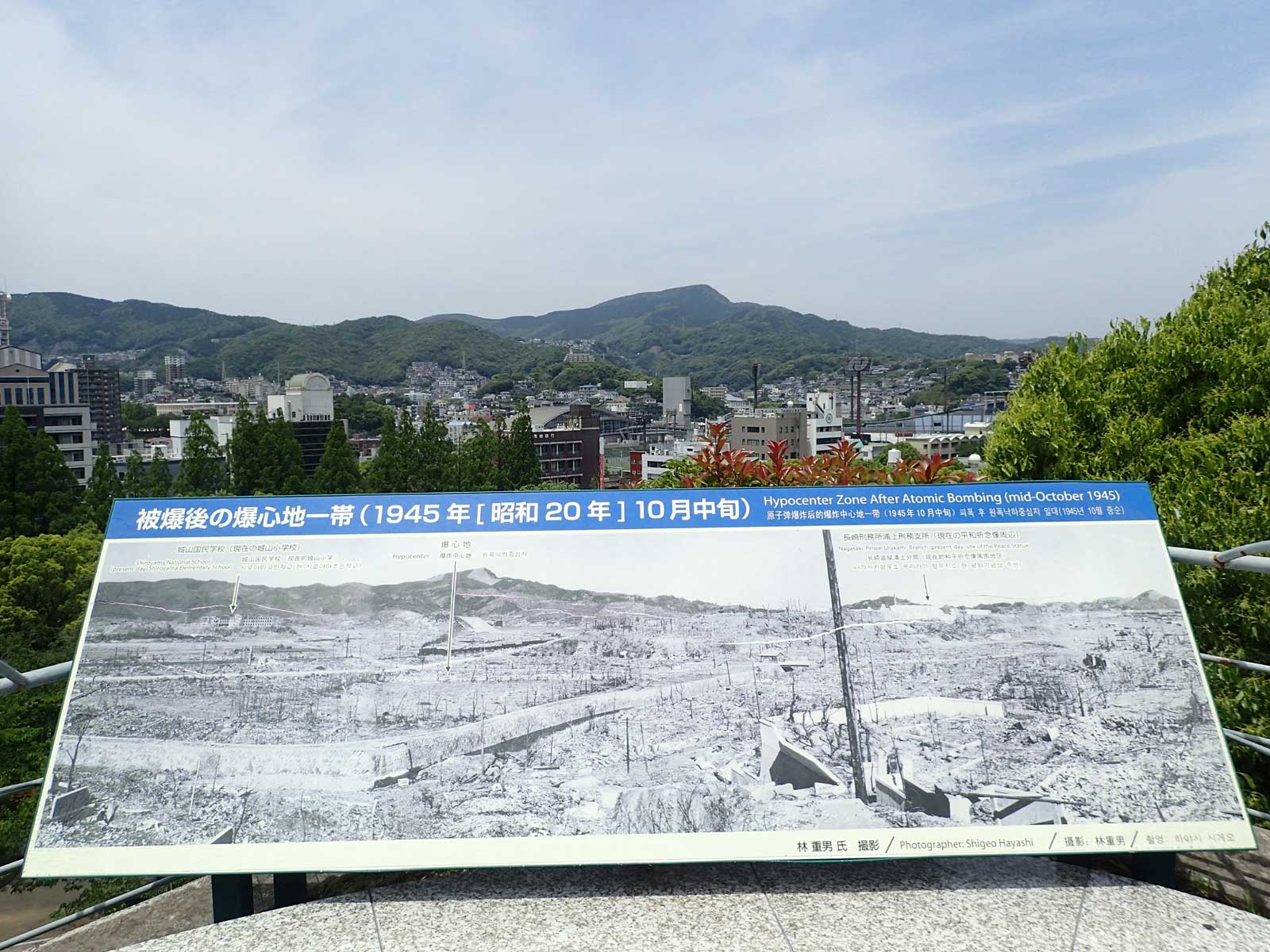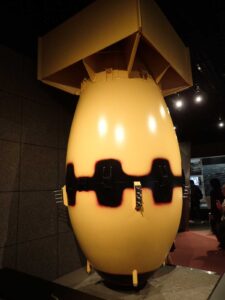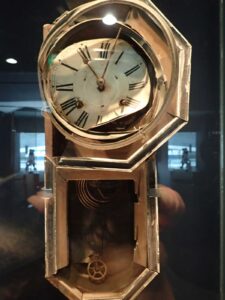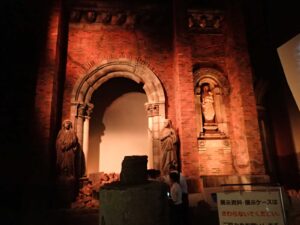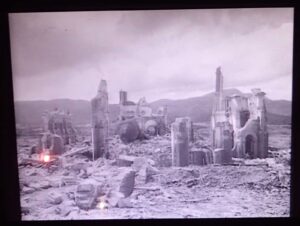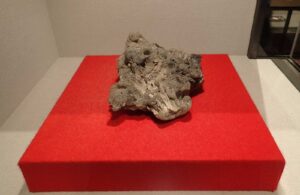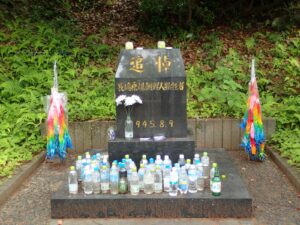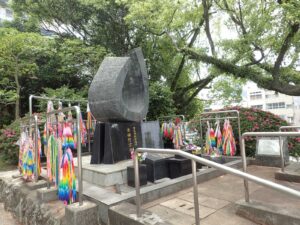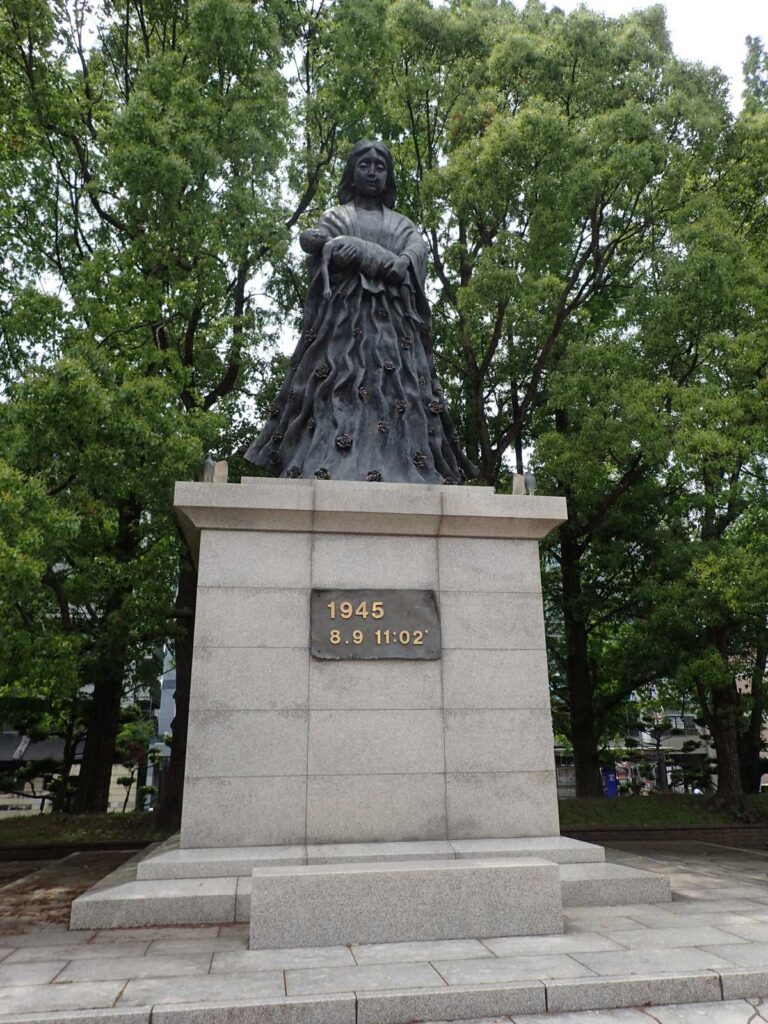When your hear the name Nagasaki one thing leaps to mind. Only two places in the world with civilian populations have ever felt the horror of an atomic bomb and Nagasaki is the second of those places. Let’s pray that there is never a third. At exactly 11:02 am on August 9th, 1945 a United States B-29 named Bockscar, dropped a plutonium fusion bomb named Fat Man that exploded 500 meters (app. 1500 feet) above the ground near the center of Nagasaki. Within moments thousands of lives were ended or forever changed as a miniature sun was created unleashing the most powerful explosion yet known to man.
Nagasaki has created a stirring museum and memorial park to ensure that their people and the world never forget what happened here and maybe understand why such a weapon should never again be used anywhere. Learning the story from the perspective of the city that experienced the bomb was a strongly emotional moment for me. I would need a heart as hard as the uranium used to build the bombs to not feel tears well up. I will not judge in hindsight the decision by Presidents Roosevelt, Truman and Prime Minister Churchill to use the bombs. They had their reasons and they were not evil men determined to kill with reckless disregard for life. Still, it is important to recognize and feel empathy for the people who suffered and lived through that event and the horrible days that followed. Some say that the lucky ones died in the blast.
When you walk into the museum’s exhibit area you immediately feel the gloom of the moments after the blast. The environment is dark and relics of the destruction are all around you. A partially melted clock greets you. Its hand forever frozen at two minutes past eleven. To your front is the remaining portion of a Catholic church wall. To your right, melted steel and blast scared steps of a primary school. Photos, film footage and artifacts recovered from the debris tell the stories of the city, of lives lost and the suffering aftermath. The image of a man’s body and the ladder he was using are burned into a concrete wall, a shadow of a life lost in a flash. Bones of a human hand fused into a glob of melted glass speak of the intensity of the heat. Photos of survivors burned and blistered stay etched into your consciousness. Photos too horrible for me to post.
Outside the museum in the area below ground zero is a park dedicated to peace. Here are memorials built by the city and others from around the world to the victims of the atomic bomb. The memorials are decorated with colorful offering left by those touched by what happened here. At a memorial to the ten thousand Korean forced laborers who died in blast there is a collection of plastic water bottles. These are left by people commemorating those who survived the initial blast but burned by the heat, radiation and fires that followed it. Many of these victims spent their final moments dazed and longing for something to cool their burned bodies and wet their dry lips. At the center of all of this is a statue dedicated to peace and an unspoken hope that a lesson was learned here.

